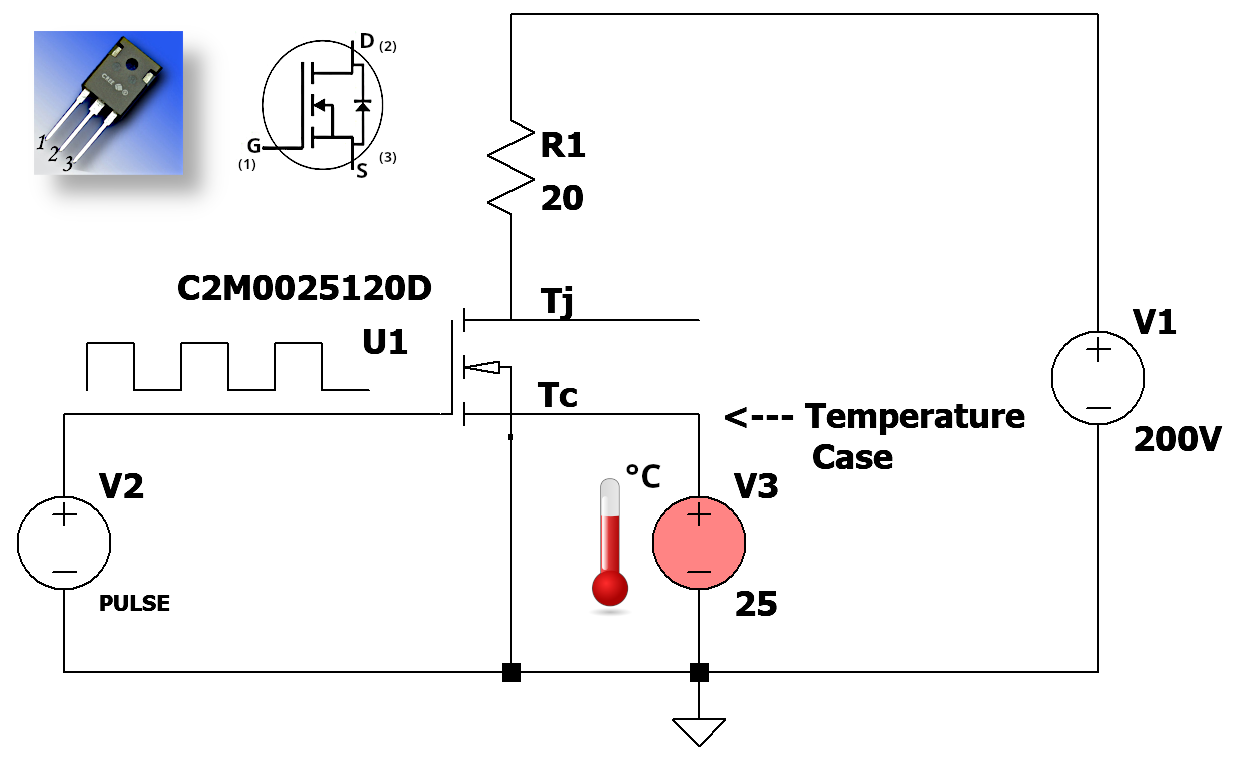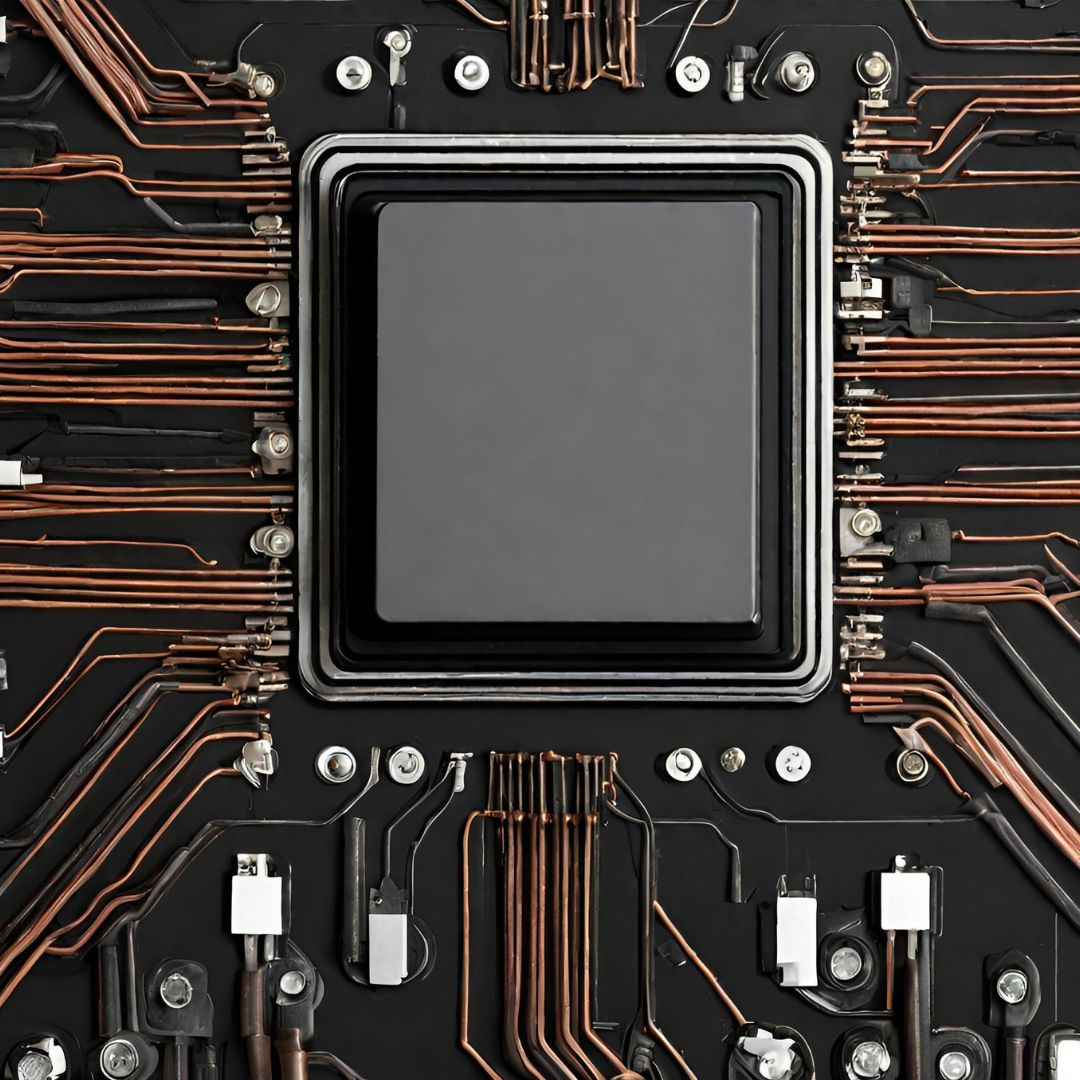Lessons I Learned From Tips About Do MOSFETs Need Cooling

Mosfet Simple Explanation At Susan Cochrane Blog
Keeping Your Cool
1. Understanding MOSFET Heat Generation
So, you're wondering if your MOSFETs need a little personal air conditioning? The short answer is: it depends! MOSFETs, or Metal-Oxide-Semiconductor Field-Effect Transistors (try saying that five times fast!), are like tiny electrical switches. They control the flow of current in a circuit, and sometimes, all that switching action can generate heat. Think of it like doing a lot of jumping jacks — you're bound to work up a sweat.
The amount of heat a MOSFET generates depends on a few things. First, how much current is it switching? The more current, the more heat. Second, how often is it switching? Rapid switching generates more heat than infrequent switching. And third, what's its "on-resistance"? This is basically how much the MOSFET resists the flow of current when it's turned on. Higher resistance equals more heat. It's a bit like trying to squeeze water through a narrow pipe — you'll get more friction (and thus, more heat) than if the pipe was nice and wide.
Now, not all MOSFETs are created equal. Some are designed to handle a lot more heat than others. These are often found in high-power applications like motor control or power supplies. They're built to dissipate heat efficiently, often with larger packages and built-in heat sinks. But even these heavy-duty MOSFETs can get overwhelmed if pushed too hard.
Therefore, judging whether cooling is needed or not is important. A hot MOSFET is not a happy MOSFET. And an unhappy MOSFET tends to fail prematurely. Overheating can damage the device itself, and it can also affect the performance of the entire circuit. Think of it as a domino effect; one overheating component can lead to a cascade of problems. So, preventing overheating is a smart idea.

The Signs and Symptoms
2. Recognizing the Warning Signs
How do you know if your MOSFET is getting a little too toasty? Well, you could touch it, but I wouldn't recommend it unless you're a fan of minor burns! Seriously, don't touch it. Instead, look for some telltale signs. One common symptom is a noticeable decrease in performance. Is your circuit behaving erratically? Is it slower than usual? These could be signs of an overheating MOSFET struggling to do its job.
Another sign is physical damage. If you see discoloration on the MOSFET's package, or if it's cracked or bulging, that's a pretty clear indication that it's been running too hot. In extreme cases, you might even smell something burning. That's definitely not a good sign! It's like your electronic equipment is screaming for help. Ignoring it is similar to ignoring a persistent cough; it will get worse.
Of course, the best way to know for sure is to measure the temperature of the MOSFET directly. You can use a thermocouple or an infrared thermometer for this. Check the datasheet for your specific MOSFET to find its maximum operating temperature. If it's exceeding that, you definitely need to do something about it.
It's also important to consider the ambient temperature. If the environment around your circuit is already hot, it's going to be harder for the MOSFET to dissipate heat. This is especially true in enclosed spaces like computer cases or power supplies. Basically, if it's a hot day, even your electronic circuits could use a glass of iced tea! So remember, monitor those MOSFET temperatures!

Lowvoltage MOSFETs Optimise Footprint With Dualsided Cooling
Cooling Solutions
3. Exploring Various Cooling Methods
Okay, so you've determined that your MOSFET needs a little help staying cool. What can you do? Fortunately, there are several options available. The simplest is passive cooling, which involves using a heat sink. A heat sink is a piece of metal (usually aluminum or copper) that's attached to the MOSFET to help dissipate heat into the surrounding air. The larger the heat sink, the more effective it is.
For more demanding applications, you might need active cooling. This involves using a fan to force air over the heat sink. This can significantly improve cooling performance, especially in enclosed spaces where air circulation is limited. Some high-power MOSFETs even use liquid cooling, which is similar to what's used in high-performance computers. This is the most effective, but also the most complex and expensive option.
Beyond heat sinks and fans, consider improving the overall airflow in your system. Make sure there are no obstructions blocking airflow around the MOSFET. Consider adding vents to your enclosure to allow hot air to escape. It's all about creating a conducive environment for heat dissipation.
Another often overlooked solution is selecting a MOSFET with a lower on-resistance. By choosing a MOSFET that generates less heat in the first place, you reduce the need for elaborate cooling solutions. It's like preventing a fire rather than putting it out; choosing the right component can save you a lot of trouble later on. So, consider your MOSFET selection carefully. And don't just look at the price! Look at the thermal characteristics.

Tutorial Cooling MOSFETs To Maximize Their Efficiency In Dynamic Systems
Design Considerations
4. Proactive Thermal Management Strategies
The best way to deal with MOSFET overheating is to prevent it in the first place. This starts with careful design considerations. When selecting a MOSFET for your application, make sure it's rated for the current and voltage you'll be using. Don't try to push a small MOSFET beyond its limits — it's a recipe for disaster.
Pay close attention to the MOSFET's datasheet, particularly the thermal resistance specifications. This tells you how well the MOSFET can dissipate heat. Choose a MOSFET with a low thermal resistance if you anticipate high operating temperatures. It's a bit like choosing a car with good gas mileage; you'll save money (and prevent overheating) in the long run.
Also, consider the layout of your circuit board. Keep heat-generating components away from sensitive components. Use wide traces for high-current paths to minimize resistance and heat generation. And don't forget to provide adequate ventilation. Think of your circuit board as a miniature city; you need to plan the infrastructure carefully to avoid traffic jams (or, in this case, heat buildup).
Finally, consider adding a temperature sensor to your circuit. This allows you to monitor the temperature of the MOSFET in real-time and take corrective action if it gets too hot. You could even program your circuit to automatically shut down if the temperature exceeds a certain threshold. This is a great way to protect your MOSFET and prevent damage to your entire system. It is similar to having a fire alarm in your house, where it helps you respond to fire issues immediately!

Cost vs. Benefit
5. Balancing Performance and Budget
Choosing the right cooling solution for your MOSFET involves balancing performance and cost. A complex liquid cooling system might be overkill for a simple circuit, while a tiny heat sink might not be enough for a high-power application. It's all about finding the sweet spot that meets your needs without breaking the bank.
Consider the long-term costs as well. While a cheap heat sink might save you money upfront, it could lead to premature MOSFET failure down the road. Replacing a MOSFET can be time-consuming and expensive, so it's often worth investing in a better cooling solution to begin with.
Don't underestimate the power of simple solutions. Sometimes, all you need is a small fan or a strategically placed heat sink to keep your MOSFET running cool. Experiment with different options and monitor the temperature to see what works best. It's similar to experimenting with cooking; you need to tweak the recipe to get it just right.
And remember, prevention is better than cure. By carefully designing your circuit and selecting the right components, you can minimize the need for expensive and complex cooling solutions. Think of it as building a house with good insulation; you'll save money on heating and cooling bills in the long run. And that applies to your electronic circuits, too. So, choose wisely!

FAQ
6. Frequently Asked Questions About MOSFET Cooling
Let's tackle some common questions about MOSFET cooling.
Q: How hot is too hot for a MOSFET?
A: It depends on the specific MOSFET! Check the datasheet for its maximum operating temperature, typically denoted as Tjmax (maximum junction temperature). Exceeding this temperature can damage the device.
Q: Can I use a heat sink compound (thermal paste) to improve cooling?
A: Absolutely! Heat sink compound fills the tiny air gaps between the MOSFET and the heat sink, improving thermal conductivity and heat transfer. Just make sure to apply it sparingly — too much can actually reduce performance. Also, make sure to apply it evenly.
Q: What if I can't find a heat sink that fits my MOSFET perfectly?
A: You can use a larger heat sink than necessary — it won't hurt! Just make sure it's securely attached to the MOSFET. Alternatively, you can modify a heat sink to fit your needs, but be careful not to damage it.
Q: Are there any software tools to simulate MOSFET thermal behavior?
A: Yes, there are! Some circuit simulation software packages include thermal analysis capabilities. These can help you predict the temperature of your MOSFET under different operating conditions.